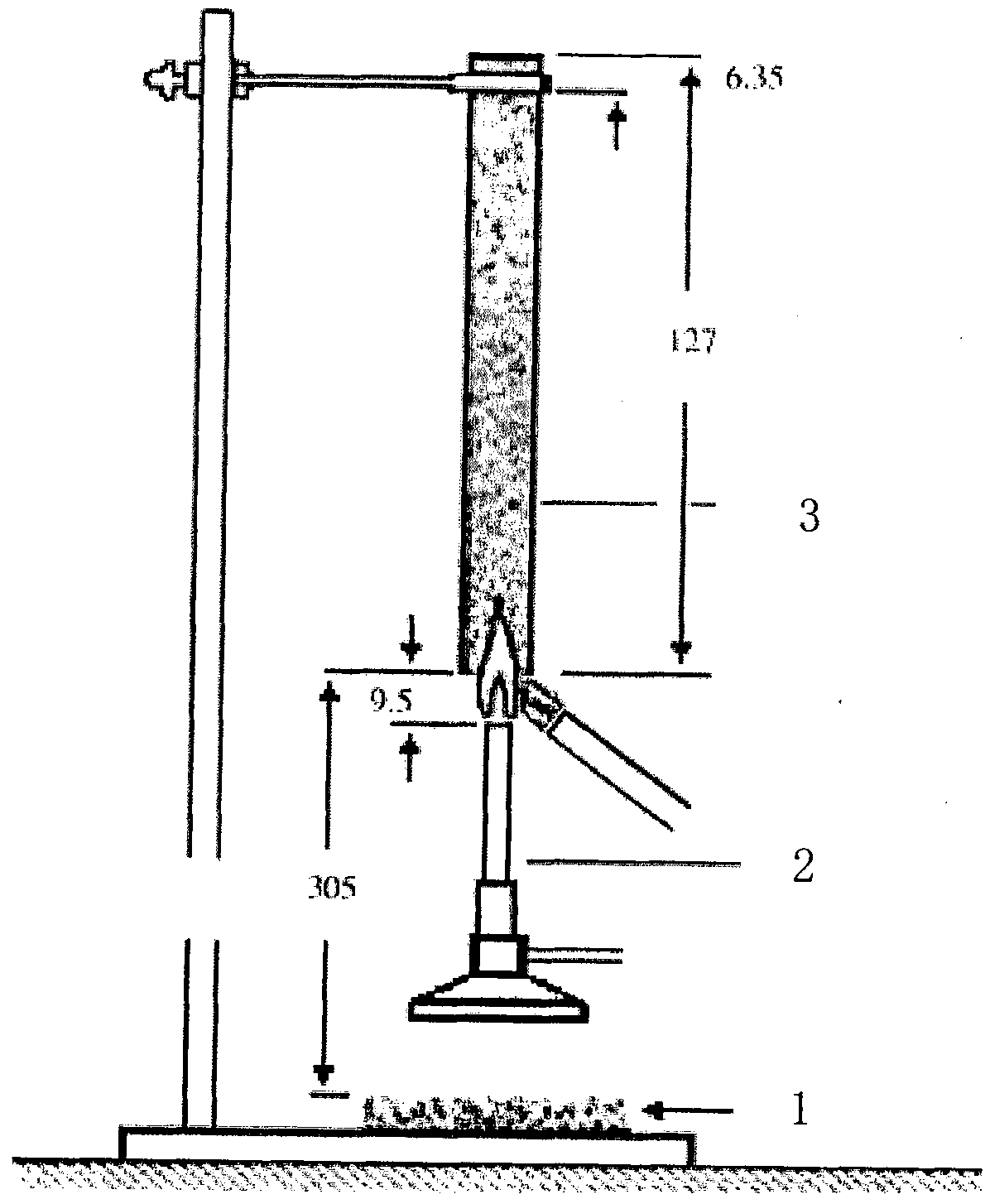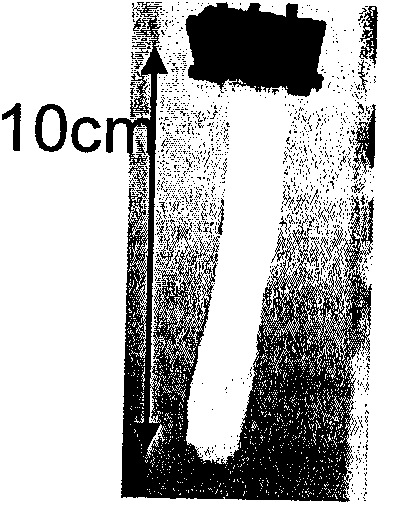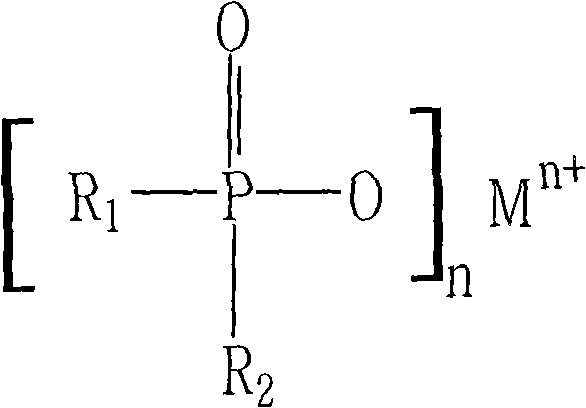Non-halogen fire-retardant polyester, preparation method and application thereof
A polyester, flame retardant technology, applied in the direction of single-component polyester artificial filament, etc., can solve the problems of poor durability, poor flame retardancy, secondary combustion, etc., and achieve good anti-dripping performance and flame retardancy Good, simple process effect
- Summary
- Abstract
- Description
- Claims
- Application Information
AI Technical Summary
Problems solved by technology
Method used
Image
Examples
Embodiment 1
[0054] 30 parts by weight of aluminum hypophosphite, 30 parts by weight of DMS (dimethylsilane), 10 parts by weight of silicon dioxide and 930 parts by weight of polyethylene terephthalate were added to the twin-screw extruder to carry out For melt blending, the temperature of each zone of the extruder is 220°C, 245°C, 265°C, 275°C, 280°C, 280°C, 280°C, 280°C, 270°C. The extruder speed was 250 rpm. The prepared blended slices were injection molded, prepared into samples, and subjected to combustion evaluation tests.
Embodiment 2
[0056] 30 parts by weight of aluminum hypophosphite, 50 parts by weight of DMS (dimethylsilane), 10 parts by weight of silicon dioxide and 910 parts by weight of polyethylene terephthalate were added to the twin-screw extruder to carry out For melt blending, the temperature of each zone of the extruder is 220°C, 245°C, 265°C, 275°C, 280°C, 280°C, 280°C, 280°C, 270°C. The extruder speed was 250 rpm. The prepared blended slices were injection molded, prepared into samples, and subjected to combustion evaluation tests.
Embodiment 3
[0058] With 50 parts by weight of aluminum hypophosphite, 30 parts by weight of DMS (dimethylsilane), 10 parts by weight of silicon dioxide and 905 parts by weight of polyethylene terephthalate and 5 parts by weight of phenylene diisodecyl phosphite The ester (antioxidant) is added to the twin-screw extruder for melt blending. The temperature of each zone of the extruder is 220°C, 245°C, 265°C, 275°C, 280°C, 280°C, 280°C, 280°C , 270°C. The extruder speed was 250 rpm. The prepared blended slices were injection molded, prepared into samples, and subjected to combustion evaluation tests.
PUM
 Login to View More
Login to View More Abstract
Description
Claims
Application Information
 Login to View More
Login to View More - R&D
- Intellectual Property
- Life Sciences
- Materials
- Tech Scout
- Unparalleled Data Quality
- Higher Quality Content
- 60% Fewer Hallucinations
Browse by: Latest US Patents, China's latest patents, Technical Efficacy Thesaurus, Application Domain, Technology Topic, Popular Technical Reports.
© 2025 PatSnap. All rights reserved.Legal|Privacy policy|Modern Slavery Act Transparency Statement|Sitemap|About US| Contact US: help@patsnap.com



